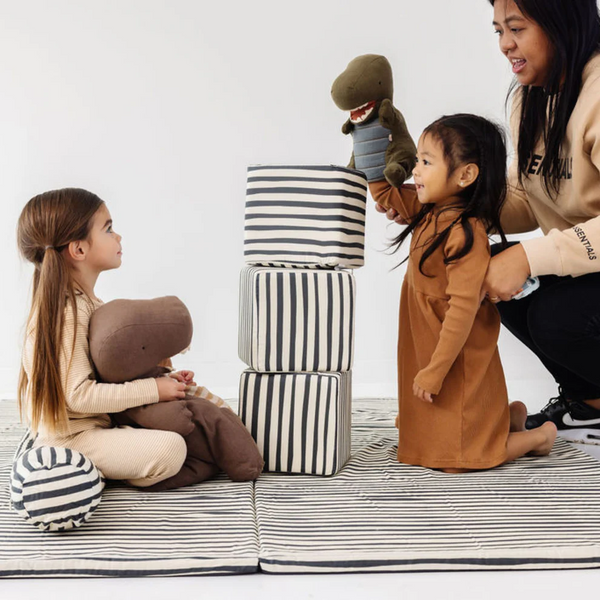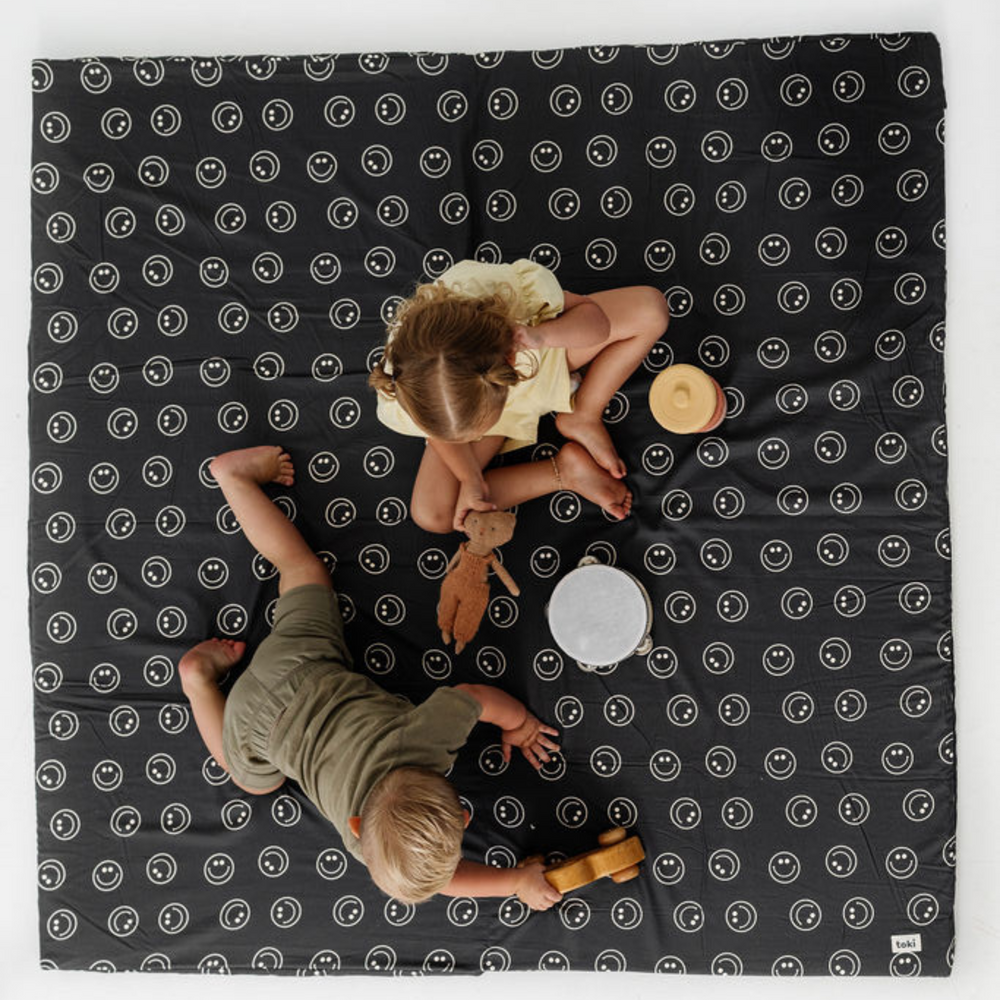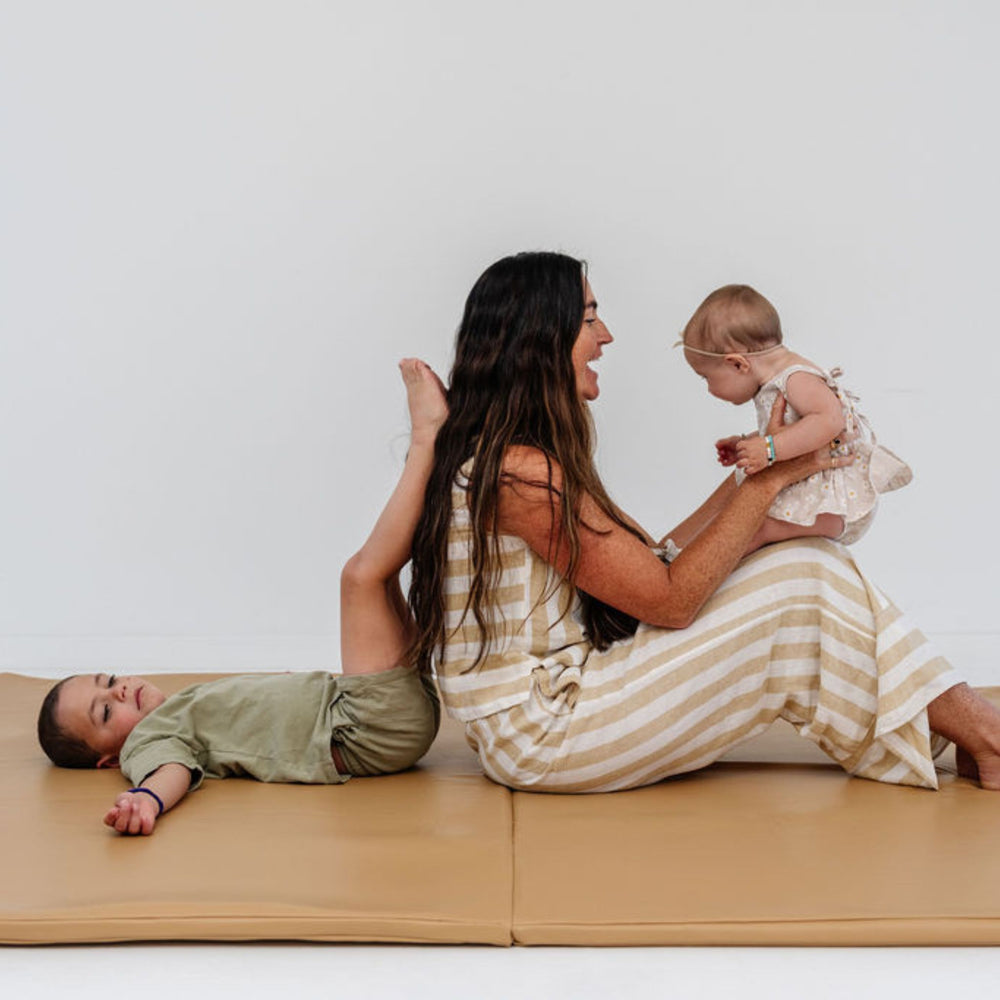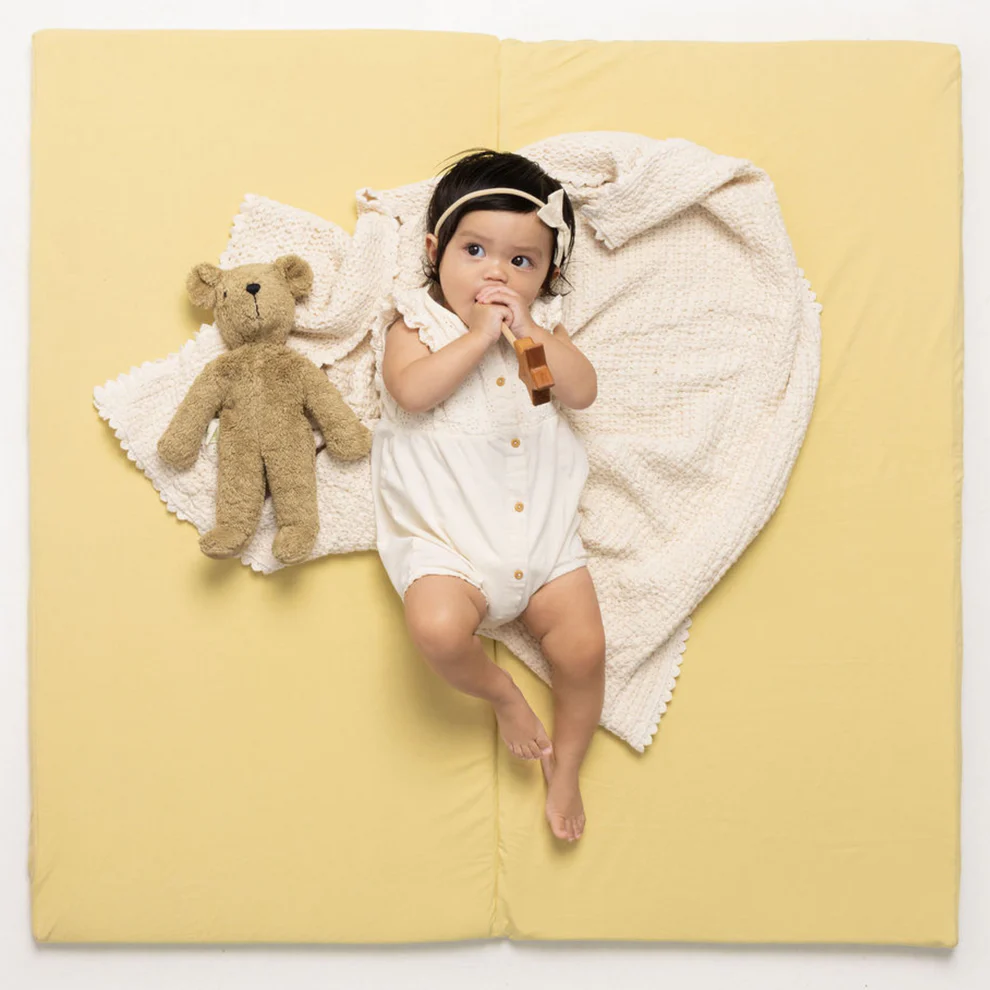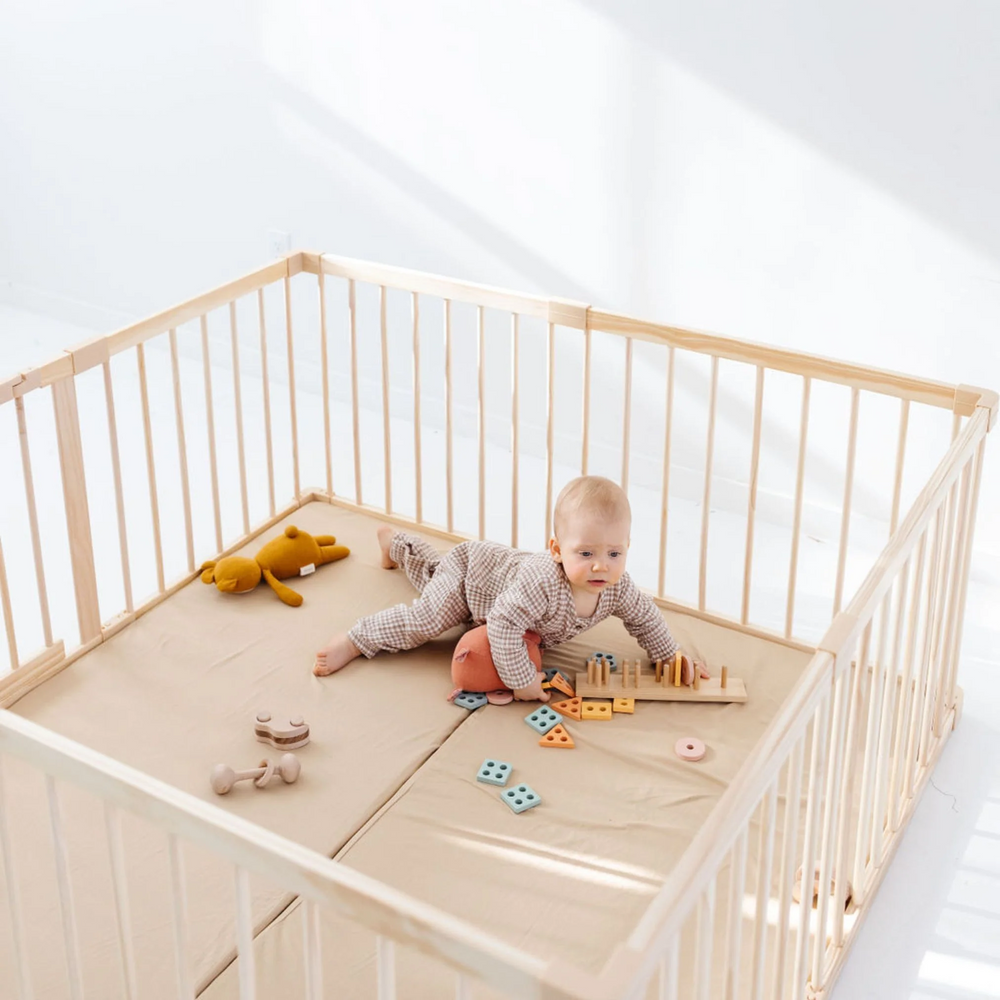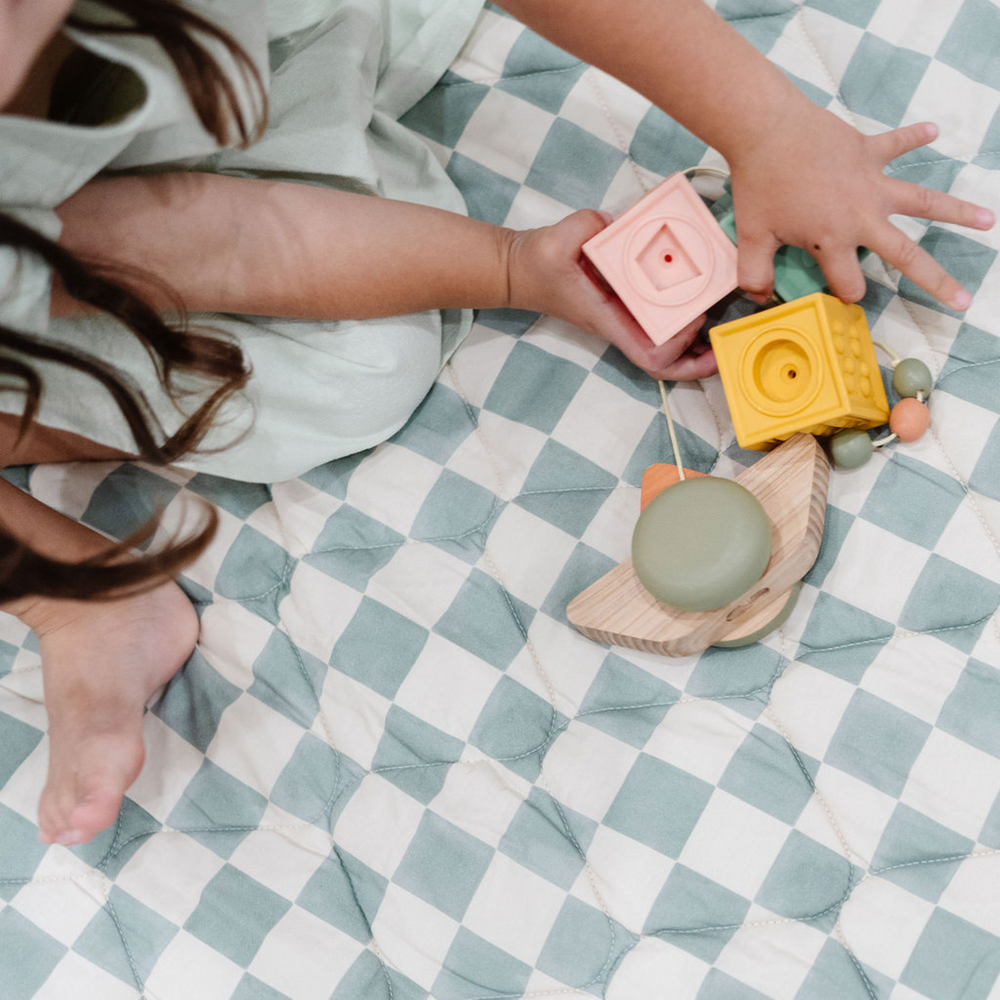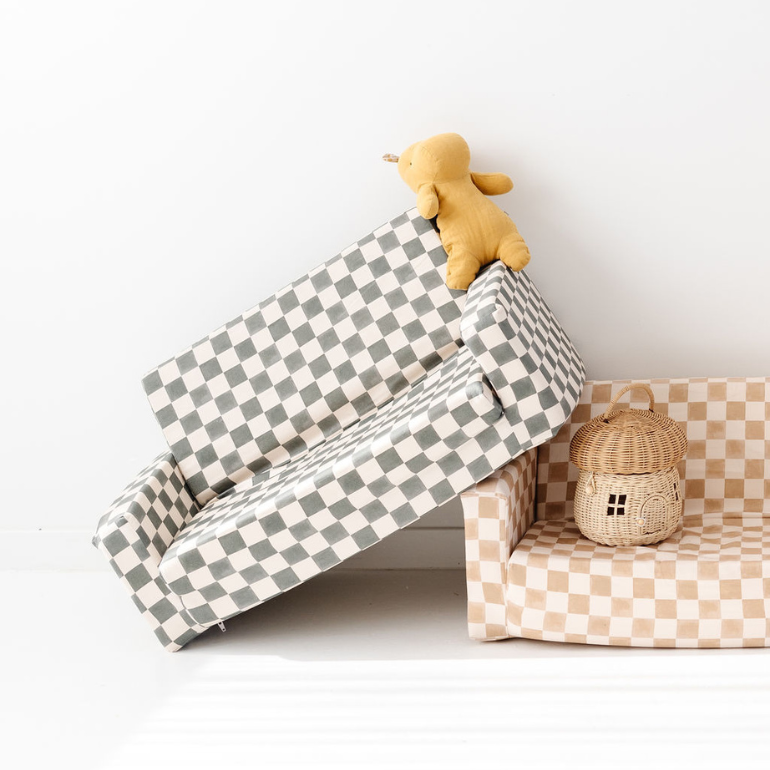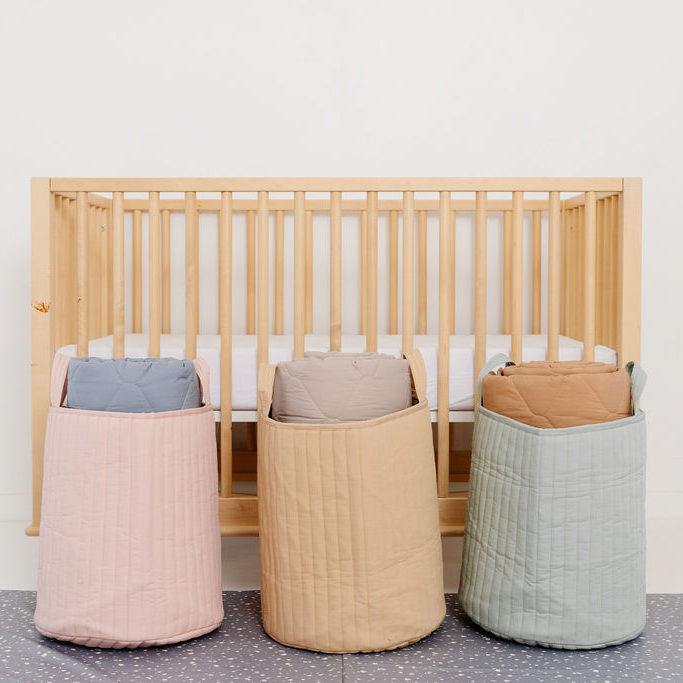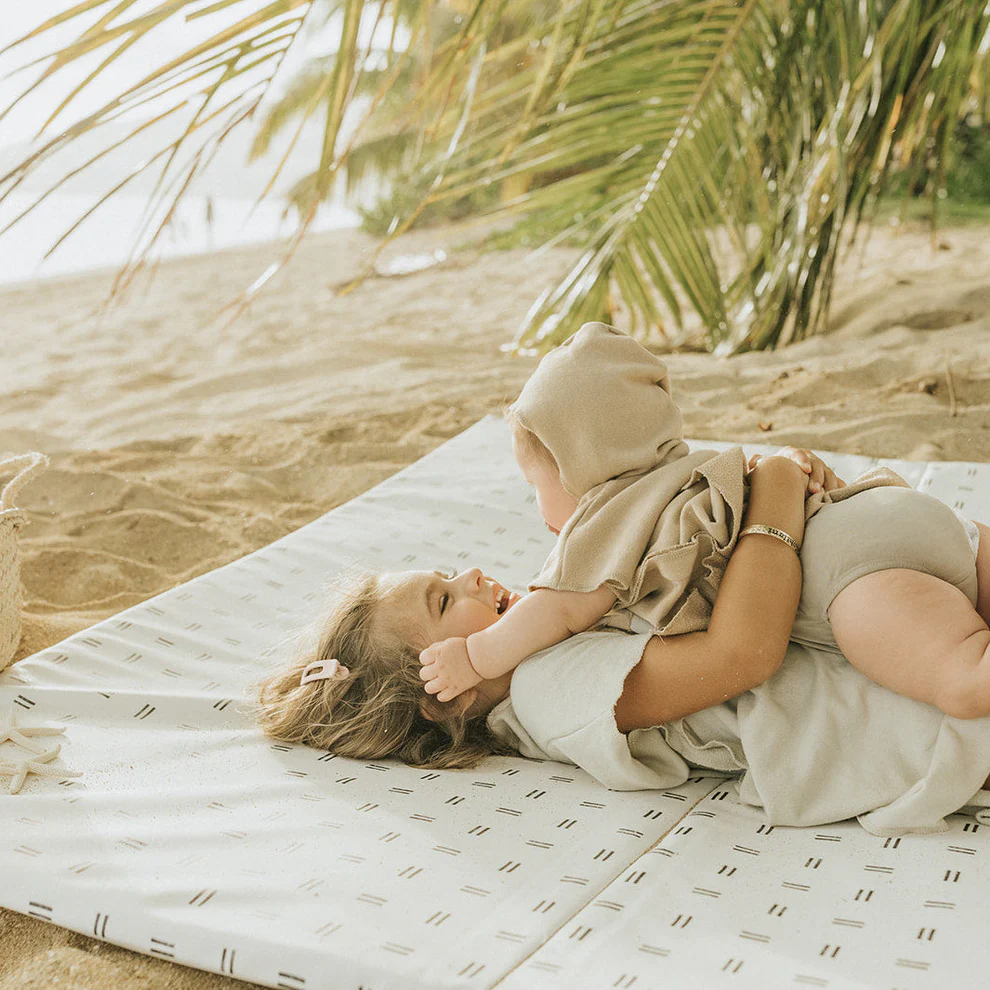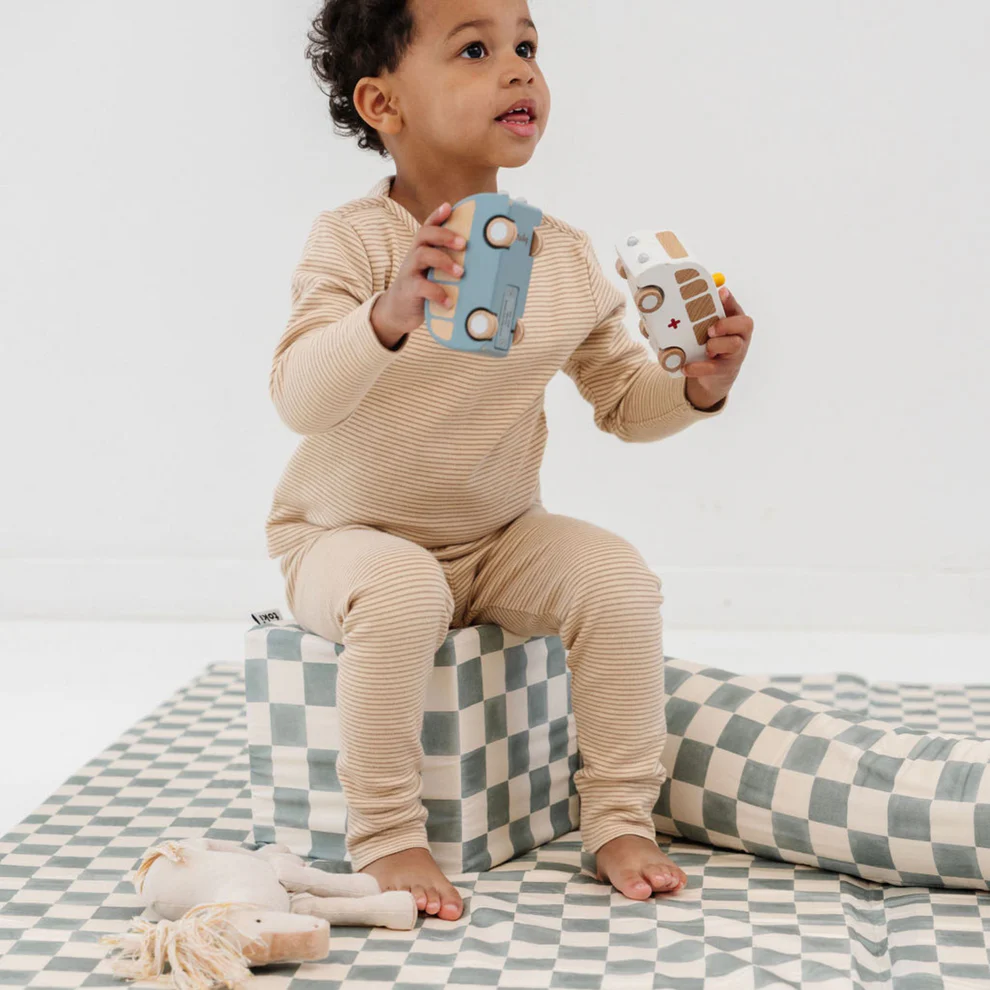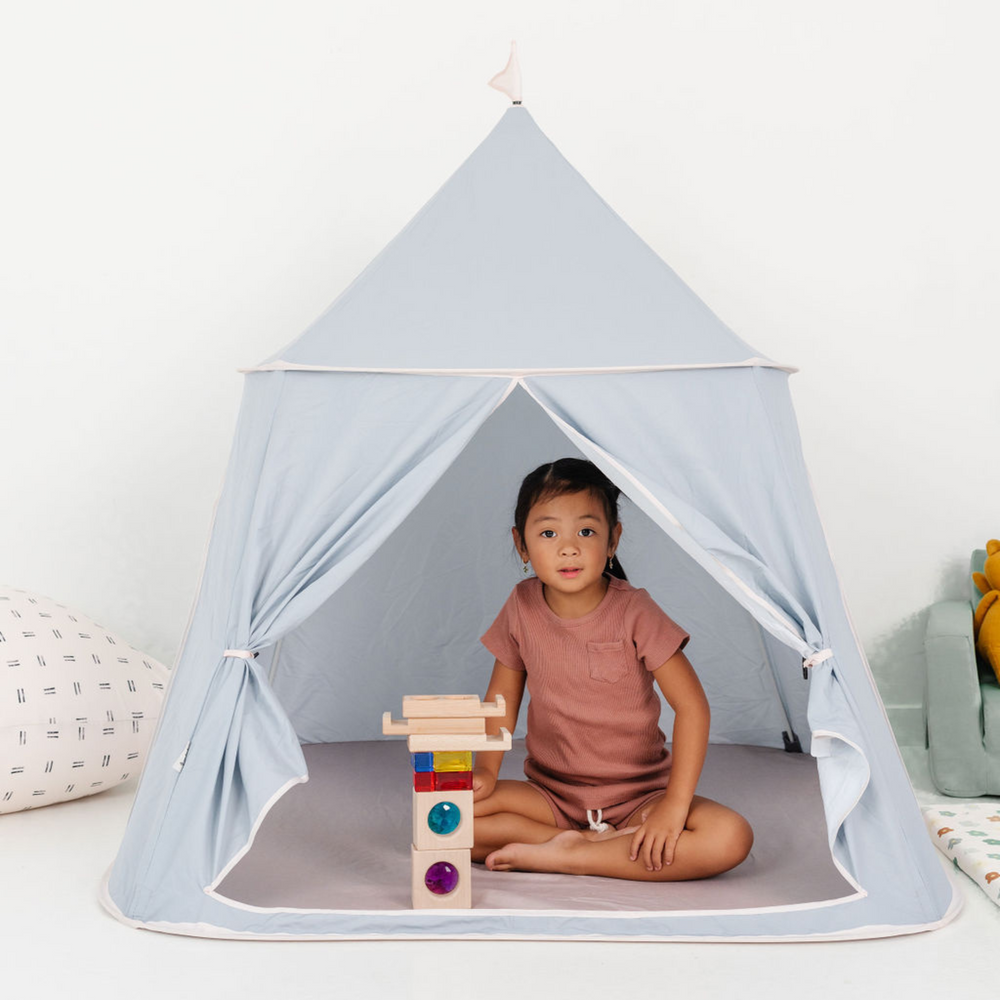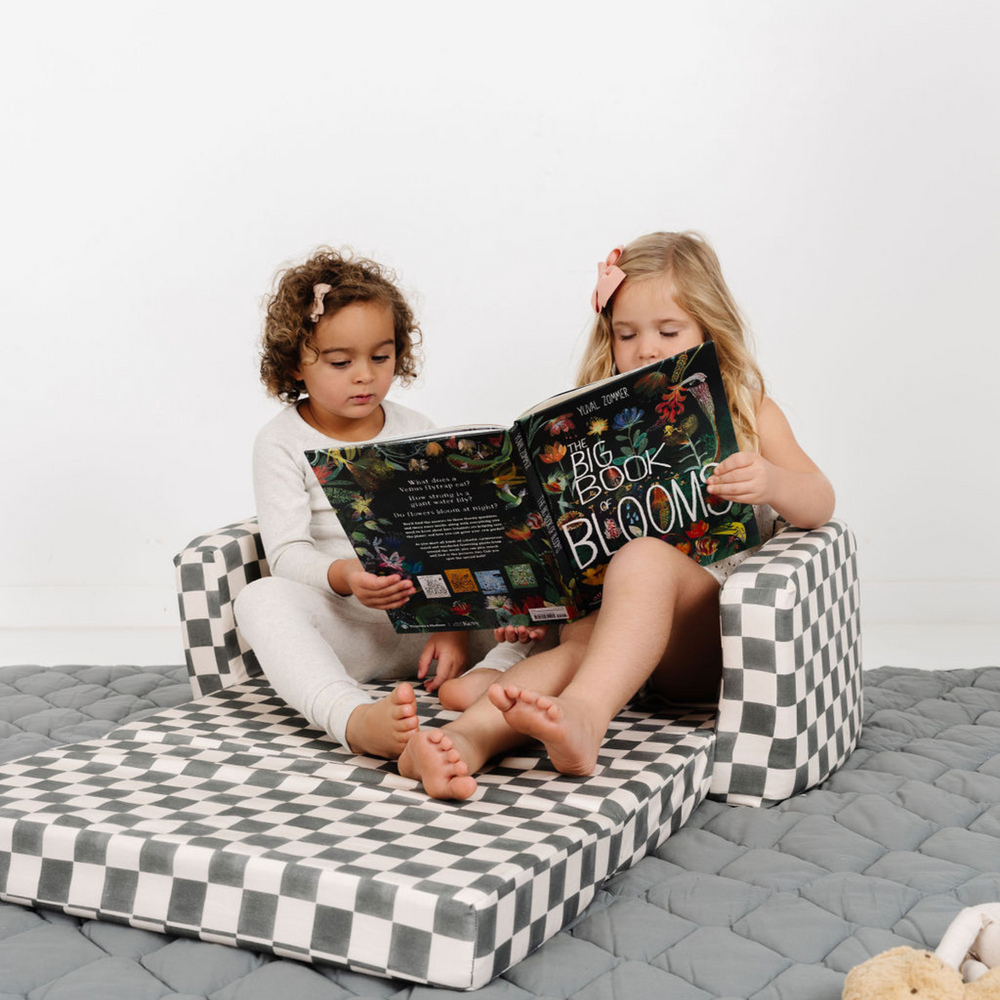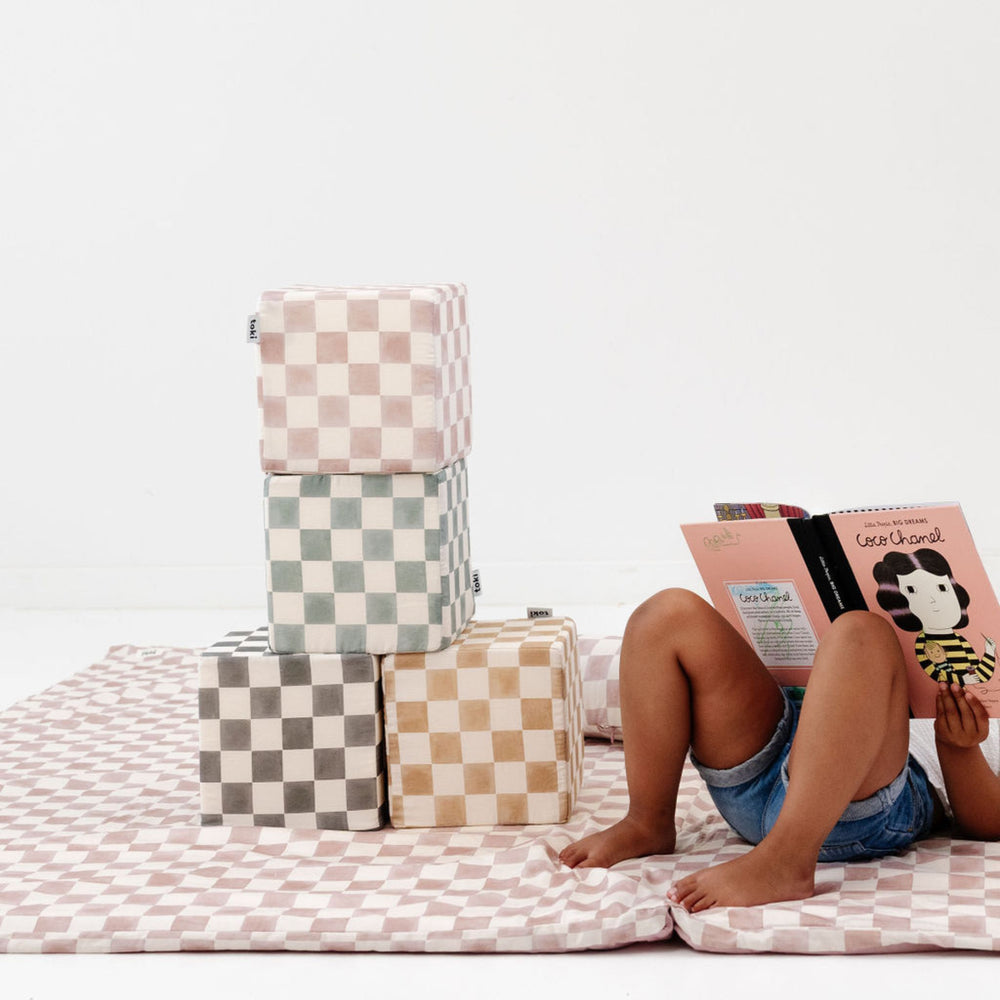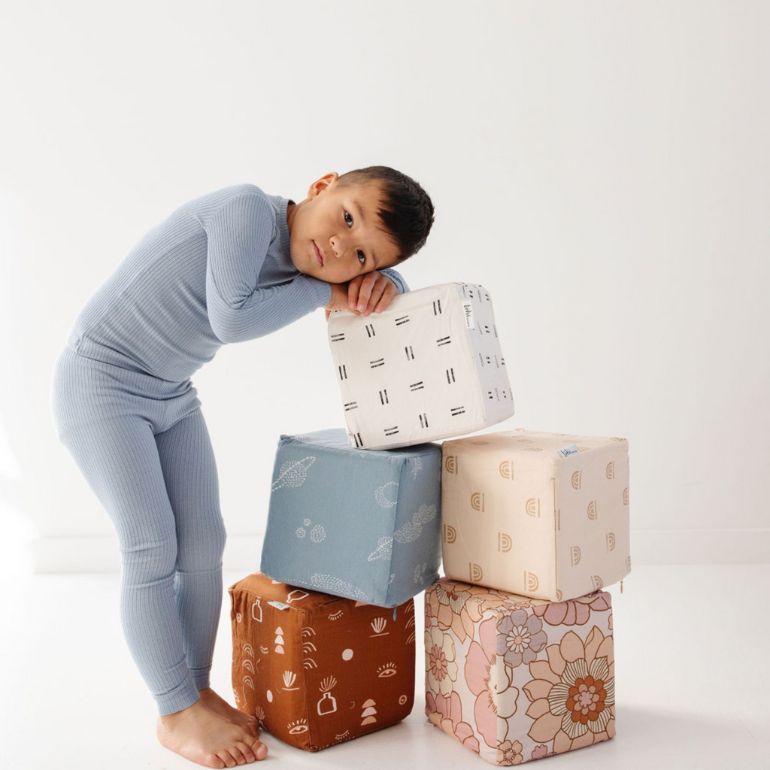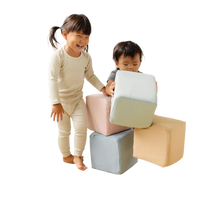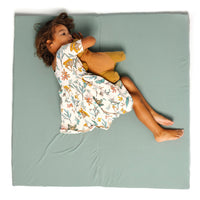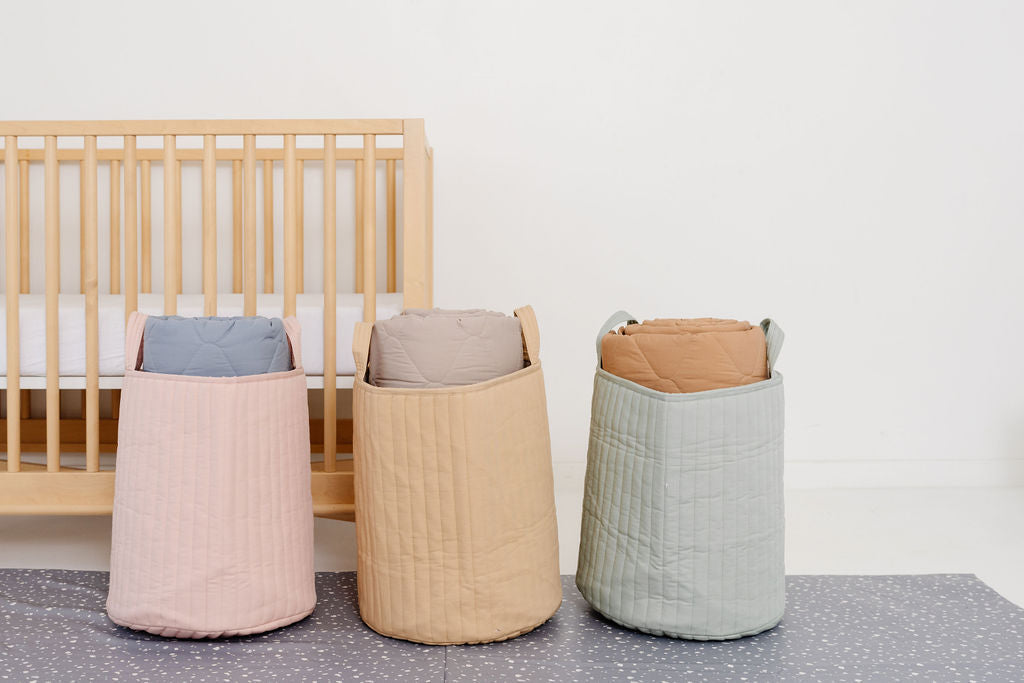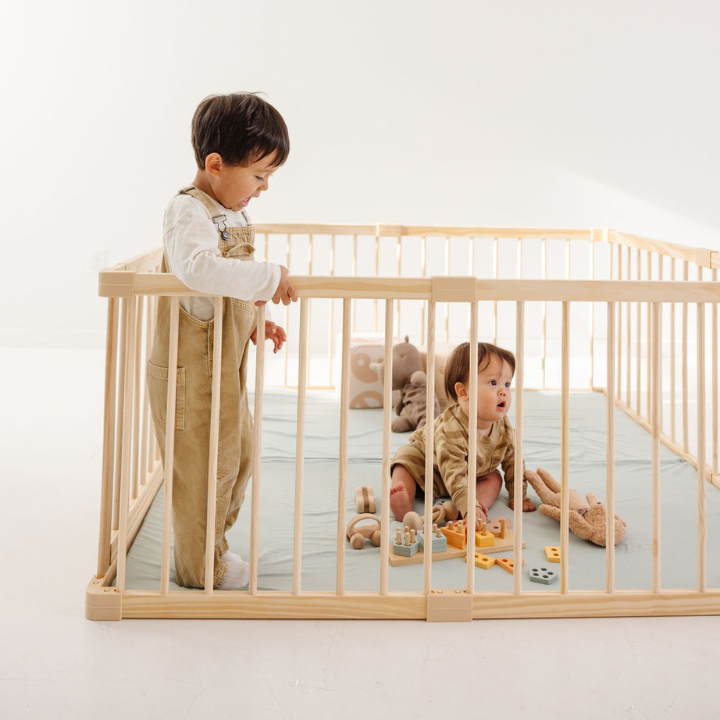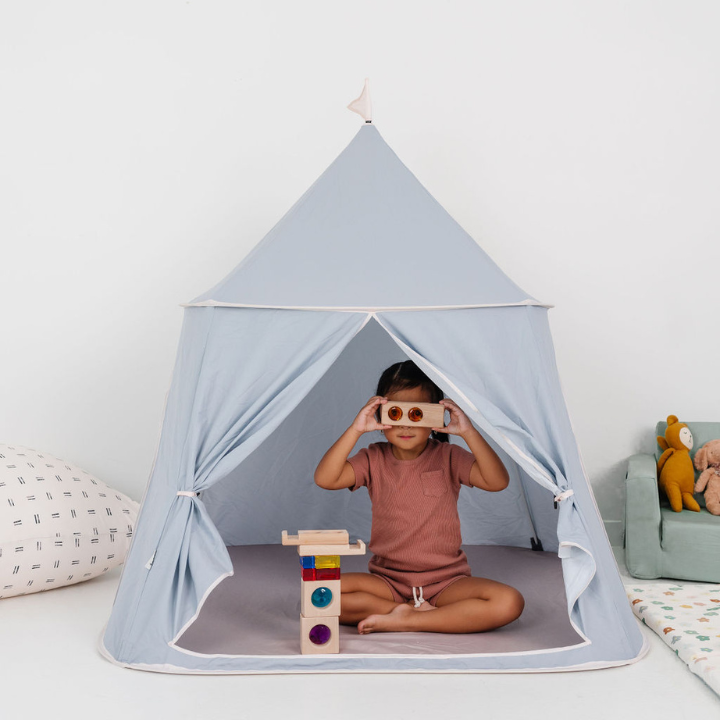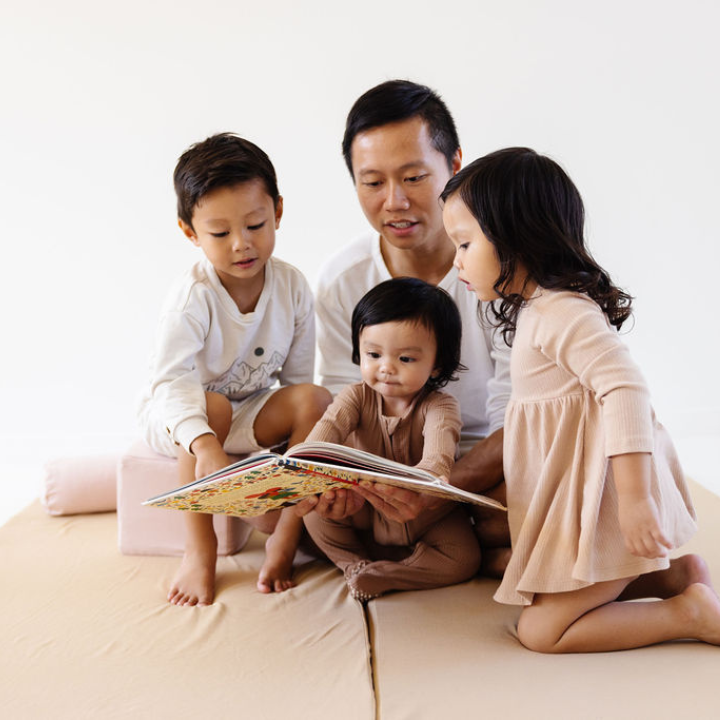Ask an Expert: Building a Calm Down Corner with Anastasia Ronczka, M.Ed.
March 31, 2025
Anastasia Ronczka lends us her expertise as a Master of Education in School Counseling, a preschool teacher, and a mom of two little boys.

Sadness, anger, frustration, fear. At some point in our lives, we have all experienced intense emotion. Through various techniques, such as writing down our thoughts in a journal, taking deep, calming breaths, or talking through them with a trusted loved one, we usually find ways to manage these emotions effectively. Unlike adults, children may not have the vocabulary to identify and express their big emotions, nor do they have the skills to regulate them. This is why tantrums and meltdowns are so common and normal in young children. Until they’re older, they rely on parents and caregivers to give them the words and tools to work through these feelings. One of the ways that you can provide an environment in which your child feels safe to express their emotions is by creating a calm down corner.
What Is a Calm Down Corner?
A calm down corner is a designated space where your child can go to regulate emotions and feel safe when feeling frustrated, sad, scared, etc. A calm down corner is intended to be safe, warm and inviting, and contain activities and tools to help with age-appropriate emotional regulation.

What Are the Benefits of a Calm Down Corner?
A calm down corner allows space for emotional regulation, and is a safe place for expression. It encourages independence, while also preventing escalation by allowing your child to have a place to go if they are feeling any negative feelings. One of the biggest benefits of a calm down corner is that it is a positive reinforcement of emotional health. It shows your child that we are allowed to feel all feelings, and that managing those feelings are skills that have to be taught and learned. Emotional regulation is a learned skill, and a calm down corner goes a long way in helping teach it.
How Can I Create an Effective Calm Down Corner?
To create an effective calm down corner, it is important to think about the environment and the activities you provide. A tent makes a great set-up for a calm down corner. It allows for your child to feel like they are safe and makes it easy for them to relax. A tent allows your child to keep the space closed so they can work on self-regulation skills privately. Include items like these in the tent to help your child feel more regulated:
-
Soft seating (a mat, bean bag, or small couch)
-
Soft lighting
-
Weighted lap blanket
-
Soothing items (like a calm down corner stuffed animal)
-
Sensory activities (fidget spinners, popper activities, textured items, and sensory bottles)
-
Breathing visuals ("rainbow breathing" or "heart breathing")
-
Emotion visuals (which allow them to point out the face if they can't find the word to describe how they feel)
It does not matter how spacious a calm down corner is—it should just feel cozy, warm and inviting. What is most important is that it contains appropriate tools and activities, and that it is "away" or more private for your child to self-regulate before returning to play.
What Age Do Kids Benefit From a Calm Down Corner?
Calm down corners can be used with children as young as 15 months until they are 6 or 7 years old. Children younger than 15 months find it more difficult to understand their emotions and label them. At this age, the idea of self-regulation is also hard to understand, which makes the space less effective. Children who are older than 6 or 7 years may no longer need the physical space of a calm down corner, as they are likely able to self-regulate. Once they no longer rely on a calm down corner, this space can be transformed into a reading nook or simply a place of retreat when they need a break from their adults.

How Should a Calm Down Corner Be Used?
A calm down corner should be used as a quiet, caring environment where children feel that they can take a break and self-regulate. Let’s say your child begins screaming after a toy has been taken from them. Once you assess the situation, your little one can go to the calm down corner to take a break before returning to play. Additionally, should things become overwhelming due to noise, a lot of people, or just how they are feeling, your child can put themselves in the calm down corner to take a break and self-regulate with the available activities before returning to play.
The calm down corner can be both an adult-free space and an adult-included space. Your child may want you with them to help them verbally process what they are thinking and feeling (or simply just a cuddle), or they may want to be alone. In the latter case, you can check in every now and then, using a visual timer so your child knows when the next check-in will be.
The length of time your child stays in the calm down corner may vary, depending on what they want, their age, and how long they've been using the calm down corner. Younger children may only stay in the calm down corner for 3-5 minutes, while some older children will stay 5-10 minutes. Read your child's cues and try not to set a time limit, if possible.
What If My Child is Not Receptive to a Calm Down Corner?
If your child is not receptive to their calm down corner, there are a few things you can do. First, assess the space to make sure it is inviting and comforting for your child. Give your child the choice of using the corner in the beginning, and also model how it is supposed to be used. Most importantly, be patient and consistent, and allow your child to familiarize themselves with the space and how it is meant to be used.
This space is meant for positive and reflective learning, not as a time-out or punishment. Rather than simply sending your child to a different room, a calm down corner is more effective for managing big emotions because there is direction and purpose with the right tools to develop emotional regulation skills.

Calm Down Corner “Dos and Don’ts”
Dos:
-
DO involve your child in setting up their calm down corner. Allow them to add a favorite stuffed animal that can "live there," or pick out a soft blanket or pillow.
-
DO respect your child's need for space in the calm down corner. This is time for them to work through what they need to, which may make them more receptive to talking.
-
DO teach emotional regulation skills before asking them to implement them. Teach breathing exercises, go over how to use the sensory tools, and talk about feelings. Emotional regulation is a learned skill.
Don'ts
-
DON'T leave the space unsupervised for too long. While there is an aspect of privacy to a calm down corner, it is important to check in to see if guidance is needed (or simply a hug).
-
DON'T use the space as a punishment. That will create negative associations with the calm down corner and not foster independent use. However, after discussing the situation, it can be helpful to encourage your child to look at their tools or visuals in the calm down corner to help them understand that situation further.
-
DON'T overcrowd or clutter the space. A calm down corner should have activities and tools for your child. Too many things can make it distracting and overwhelming.

Shop the blog
Breeze Play Tent
$128.25 - $128.25
An easy-to-assemble, easy-to-store pop-up tent that’s home base for your child’s fantastic adventures.
Shop Now
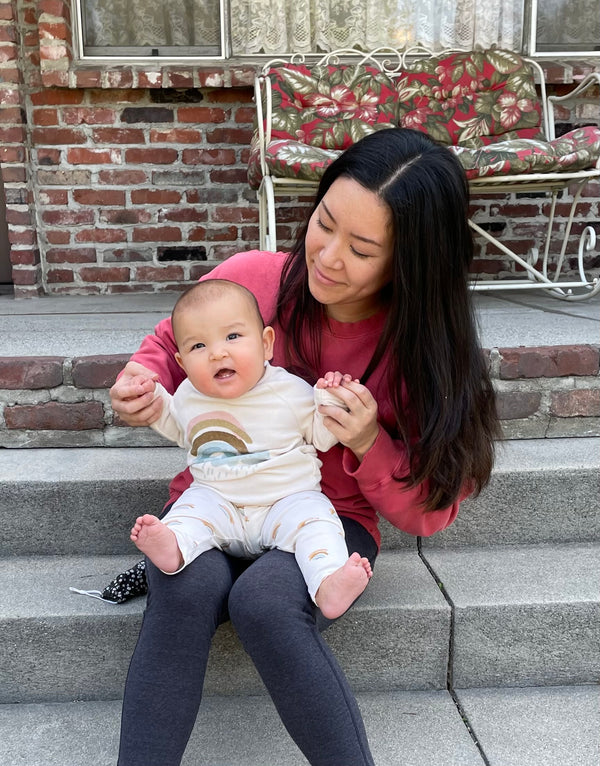
About the Author: Alice
Alice Mendoza is a copywriter and blog writer based in Los Angeles. She began writing for a baby brand while on maternity leave, and realized she had found her niche. Today, she writes exclusively within the baby space, using her BFA in Creative Writing and her own experience as a mother to guide her. When she’s not working, you can find her chasing down her toddler, going on walks around the neighborhood, or watching reality TV.
